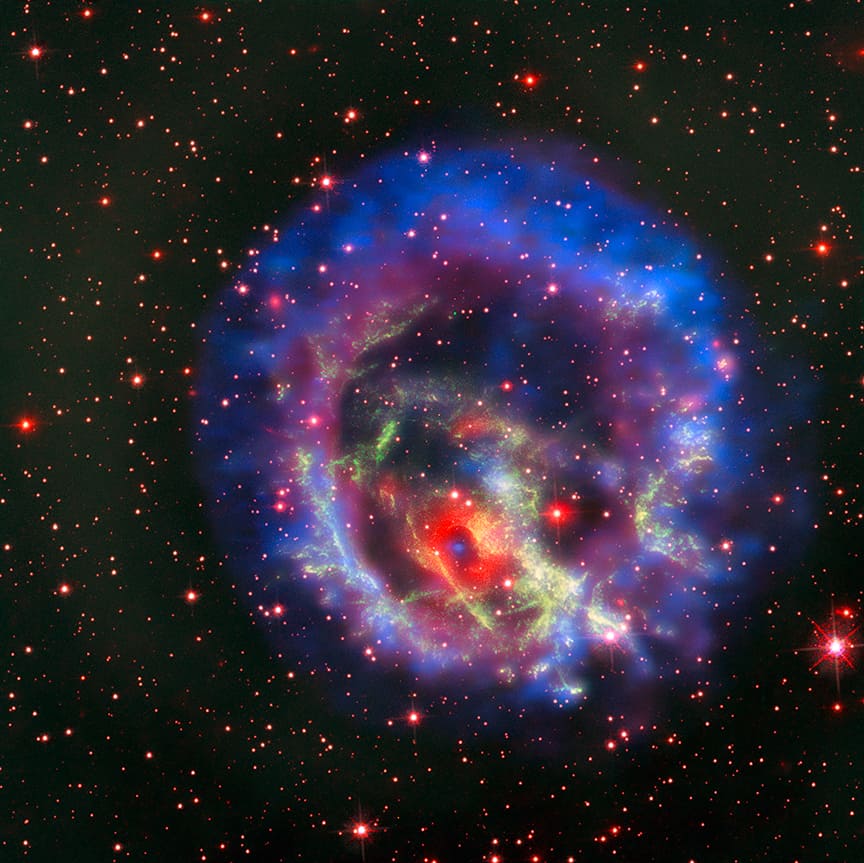The Cosmos with E0102
Astronomers have discovered a special kind of neutron star for the first time outside of the Milky Way galaxy, using data from NASA’s Chandra X-ray Observatory and the European Southern Observatory’s Very Large Telescope (VLT) in Chile.
Neutron stars are the ultra dense cores of massive stars that collapse and undergo a supernova explosion. This newly identified neutron star is a rare variety that has both a low magnetic field and no stellar companion.
The neutron star is located within the remains of a supernova — known as 1E 0102.2-7219 (E0102 for short) — in the Small Magellanic Cloud, located 200,000 light years from Earth.
This new composite image of E0102 allows astronomers to learn new details about this object that was discovered more than three decades ago. In this image, X-rays from Chandra are blue and purple, and visible light data from VLT’s Multi Unit Spectroscopic Explorer (MUSE) instrument are bright red. Additional data from the Hubble Space Telescope are dark red and green.
Oxygen-rich supernova remnants like E0102 are important for understanding how massive stars fuse lighter elements into heavier ones before they explode. Seen up to a few thousand years after the original explosion, oxygen-rich remnants contain the debris ejected from the dead star’s interior. This debris (visible as a green filamentary structure in the combined image) is observed today hurtling through space after being expelled at millions of miles per hour.
Chandra observations of E0102 show that the supernova remnant is dominated by a large ring-shaped structure in X-rays, associated with the blast wave of the supernova. The new MUSE data revealed a smaller ring of gas (in bright red) that is expanding more slowly than the blast wave. At the center of this ring is a blue point-like source of X-rays. Together, the small ring and point source act like a celestial bull’s eye.
The combined Chandra and MUSE data suggest that this source is an isolated neutron star, created in the supernova explosion about two millennia ago. The X-ray energy signature, or “spectrum,” of this source is very similar to that of the neutron stars located at the center of two other famous oxygen-rich supernova remnants: Cassiopeia A (Cas A) and Puppis A. These two neutron stars also do not have companion stars.

A composite image of the supernova 1E0102.2-7219 contains X-rays from Chandra (blue and purple), visible light data from VLT’s MUSE instrument (bright red), and additional data from Hubble (dark red and green). A neutron star, the ultra dense core of a massive star that collapses and undergoes a supernova explosion, is found at its center.